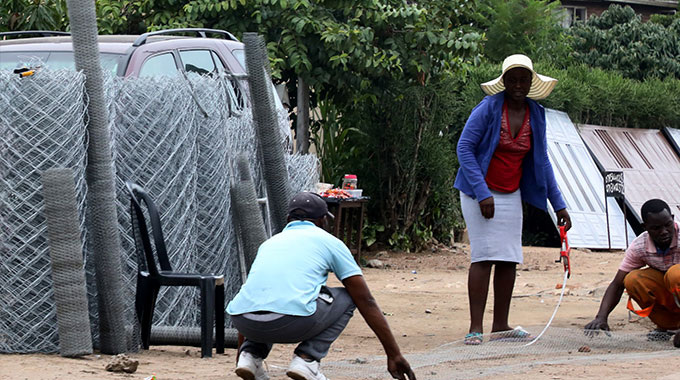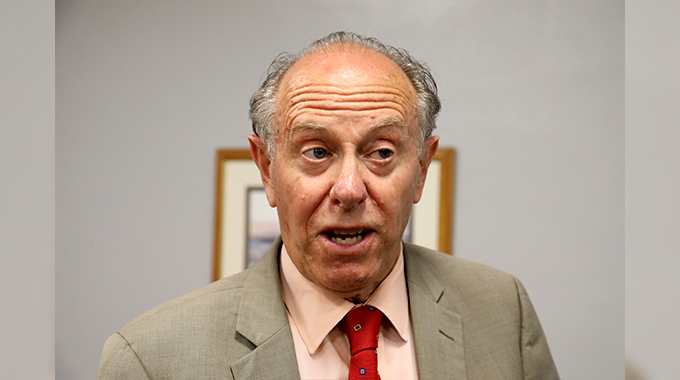The Lockdown Creative Writing Challenge: A story is written backwards

Christopher Mlalazi
Last week in the Lockdown Creative Writing Challenge we continued with our treatment of revision while as the writer, you are working on your story.
We will continue again with that thread, as there is still more to discuss on this topic.
Actually, if one were to look at it closely, we will agree that revision is about 95 percent of the effort that goes into polishing and finishing a story.
And where did the 95 percent come from?
I actually wanted to say 99 percent, as once the story gets going, the writer quickly discovers that they spend almost all of their entire time occupied with countless sorties of revision.
It might be the paragraph, the chapter, or the entire book, but you will always be going back on the story, again and again until you know it, as they say, like the proverbial back of your hand.
Let’s look at it this way. As we said in our last installment, the first effort is to first try to get the story arc in place. This has several names – some call if the frame (like the toy wire car example I provided), some call it the spine, while others may call it whatever they want, but the trick is being able to identify and see it.
Another easy comparison to the story arc is the ruler — yes that plastic thing that was so important at primary school which you used for many things, for measuring, for underlining, for counting from one to thirty, and even sometimes for knocking other students on the head with, not to mention the teacher using it on your knuckles for failing to recite the multiplication table.
The measurement ruler is an abstract concept, but that makes measuring a tangible entity. And so is the spine of your story line too. It makes you be able to actually see the story, and where it is going to, and how you can play around with the route of its progression.
In revision, there is a very important mantra that the budding writer must understand, and which is key to either expanding or compacting the story that is being written.
This concept is difficult to understand first, but once one grasps its logic, then everything tumbles into place after that.
A story is written backwards.
As we mentioned, this concept might sound like some mumbo jumbo when you first hear about it, but, hear us dear aspiring writers, it certainly is not, it’s the crème de la crème of creative writing concepts, and it is very easy to explain and execute, and here is how it goes;
The actual aim of the first several drafts of the story is to reach a provisional resolution, but which might change later as you further flesh out your story.
But once you think you have that resolution which you think is good, even temporarily, this is when you now start writing the story you want to tell — by going backwards into the story and aligning everything you have previously written so that it all points towards that resolution. That is what is meant when we say the story is written backwards.
Practically, the resolution is written last, but theoretically, that last part is now your new beginning.
Hope this makes sense.
And so now you are going back on your story, changing things so that they align with your provisional resolution. You will soon discover that a lot of new thinking and writing now has to be placed within the body of the story. And as you do that, you have to constantly keep your mind on that resolution, as it is your lighthouse leading the ship in, or warning it away from any dangers lurking on the coast that might sink the ship, or your story.
As you keep your mind on the resolution, you also have to keep it on the story arch, or frame too. This calls for extra mental vigilance as you write, as one slight mistake, you can find yourself straying away from that main route, and losing sight of the original story you are trying to carve out.
And which brings us to another writing concept.
A story idea in progress is never final. And what do we mean by this?
For example, you are on one of your revisions which you suspect might be your final. You have your story spine in place, and so to your great resolution, but while revising a certain paragraph within, the story strays away – simply put, you are happily on your way to the city centre along Luveve Road, then without realising it, you turn right into Mpopoma Drive, maybe attracted by something down there, and realising you have detoured, what should you do?
Do a U-turn and go back to Luveve Road, or continue along Mpopoma Drive and see where it leads you to?
This is a much discussed topic in creative writing workshops, and we will continue with this in the next installment.
Meanwhile, don’t take unnecessary risks, stay alive, and stay writing!










Comments